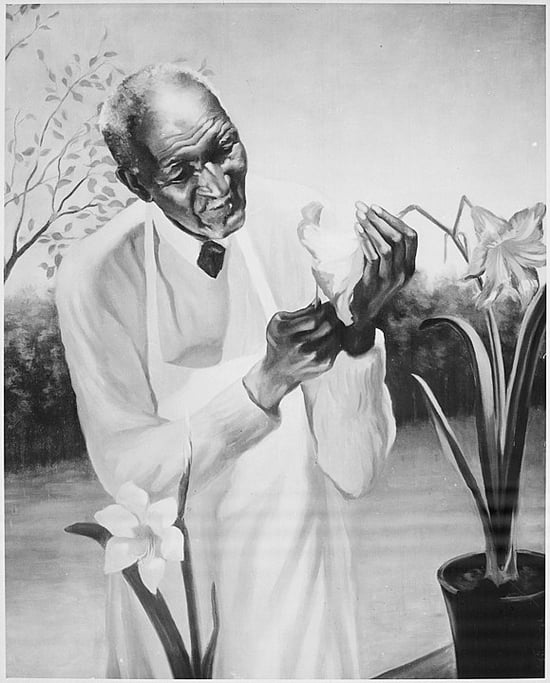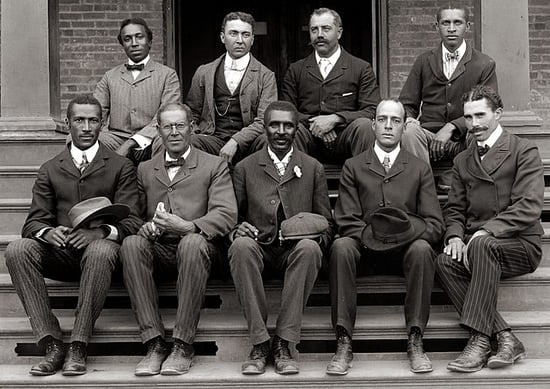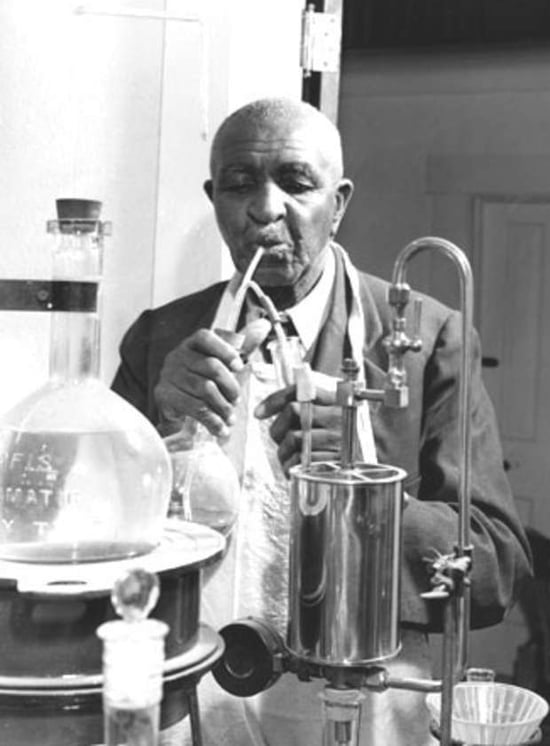The sustainability of George Washington Carver's environmental contributions

George Washington Carver is one of those names that you may hear frequently concerning Black history. His titles include inventor, scientist, botanist, educator, agriculturalist, and chemist, but he is lesser known as one of the most significant environmentalists of the 20th century. After all, this Missouri-born slave strived to receive an education and eventually became an agricultural scientist revolutionizing commercial agriculture with peanuts. This was not a trivial pursuit. Carver's work would uplift the impoverished south and forever shift their dependency on cotton.
In 1897, Booker T. Washington, founder of Tuskegee Institute in Tuskegee, Alabama, convinced Carver to become the school's director of agriculture. It was at Tuskegee Institute where Carver developed his crop rotation method. According to the National Inventors Hall of Fame, crop rotation alternates nitrate-producing legumes such as peanuts and peas with cotton. Cotton depletes the soil of nutrients. After the south suffered great destruction of cotton crops due to a mass influx of boll weevils, Carver taught southern farmers the crop rotation method, which enabled the soil to replenish itself. The farmers soon began planting peanuts one year and cotton the next.
 George Washington Carver seated (front row center) with the staff of Tuskegee Institute
George Washington Carver seated (front row center) with the staff of Tuskegee Institute
All in all, the agriculturalist went on to discover over 325 uses for peanuts including paper, flour, insulation, ink, oil, shaving cream, and more. He also worked with soybeans, sweet potatoes, and pecans for other agricultural endeavors.
A little-known fact about George Washington Carver was his work with automaker Henry Ford, during World War II. Ford was an admirer of Carver, and in 1934, the two formed an unlikely pen-pal relationship, eventually meeting and visiting each other's facilities and gleaning from each other's work.
According to History.com, Ford made several trips to Tuskegee to enlist Carver's help developing synthetic rubber to compensate for wartime shortages. Carver arrived in Dearborn, MI. in July of 1942, and the two inventors began their collaboration. Ford and Carver experimented with sweet potatoes and dandelions before discovering success with the plant-weed goldenrod.
The roster seeking advice from Carver was quite impressive. Presidents Theodore Roosevelt, Calvin Coolidge, and Franklin Roosevelt sought his advice about agricultural concerns. More evidence of Carver's respect around the world was the arrival of the Crown Prince of Sweden, who traveled to the U.S. to study under Carver. Mahatma Gandhi also sought Carver on matters of agriculture and nutrition.
 George Washington Carver pictured working in his lab.
George Washington Carver pictured working in his lab.
The pioneer in sustainable farming techniques also advocated for conservation efforts for American wildlands. A fitting tribute, among his accolades, is located in his hometown. Diamond Grove, MO. is home to the George Washington Carver National Monument, a national park honoring the environmentalist's inherent love of nature, phenomenal life story, and exceptional contributions to the world.
